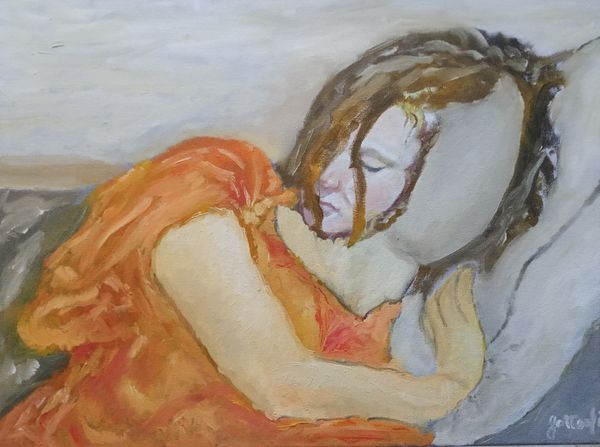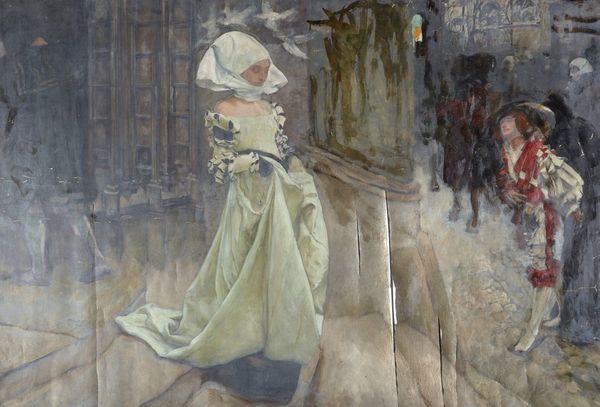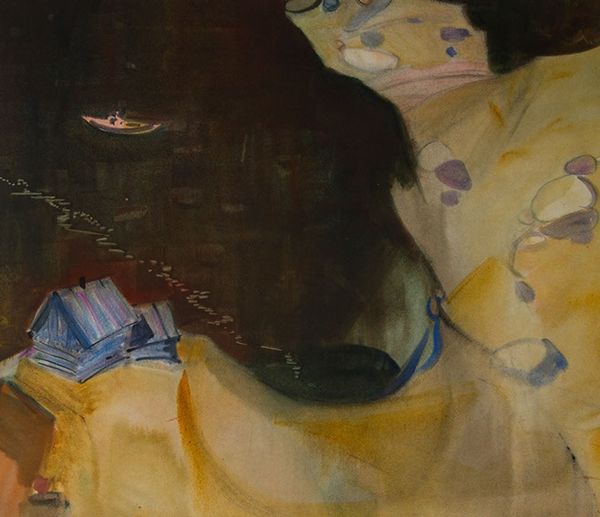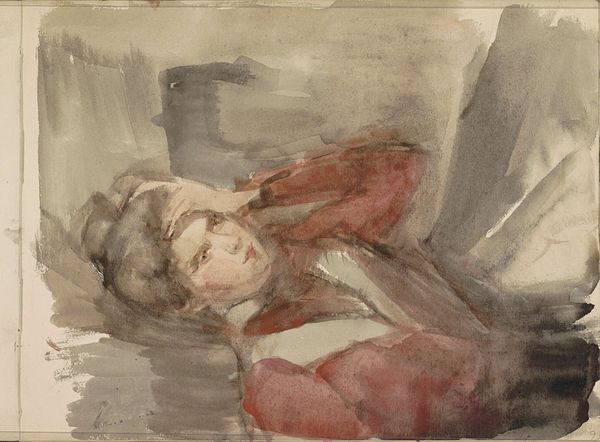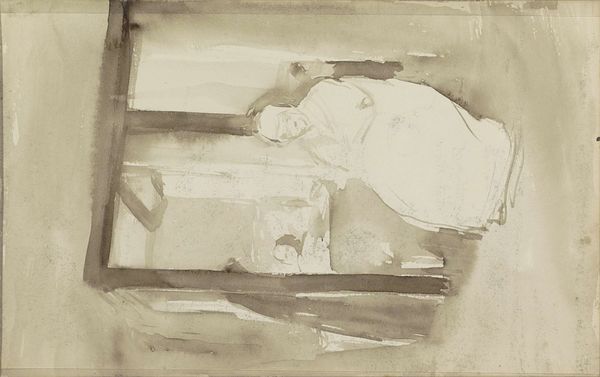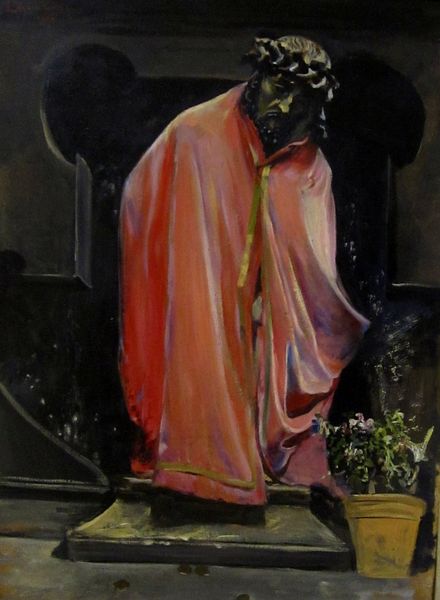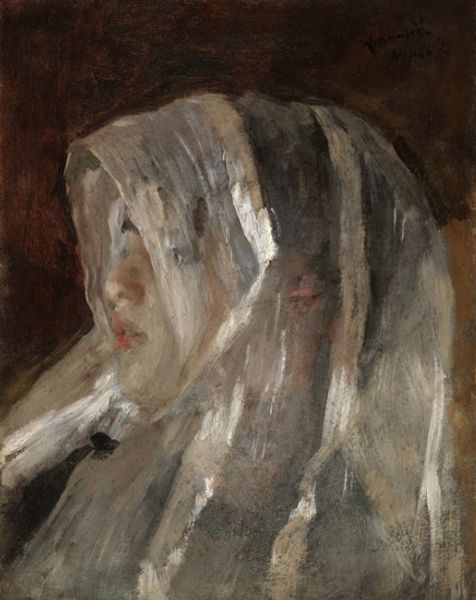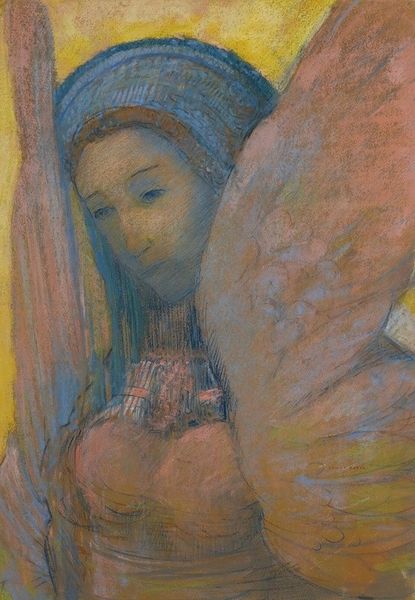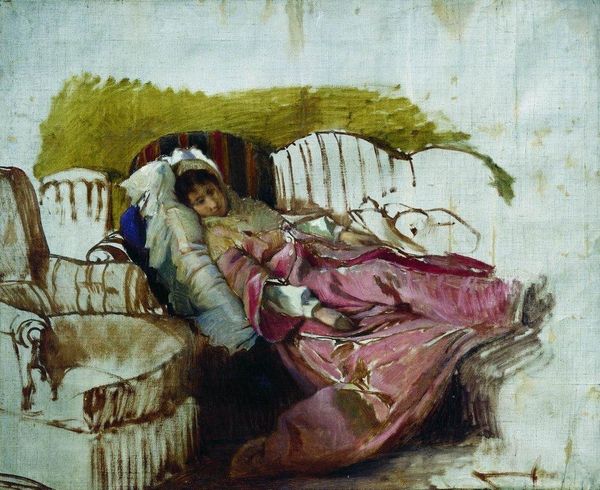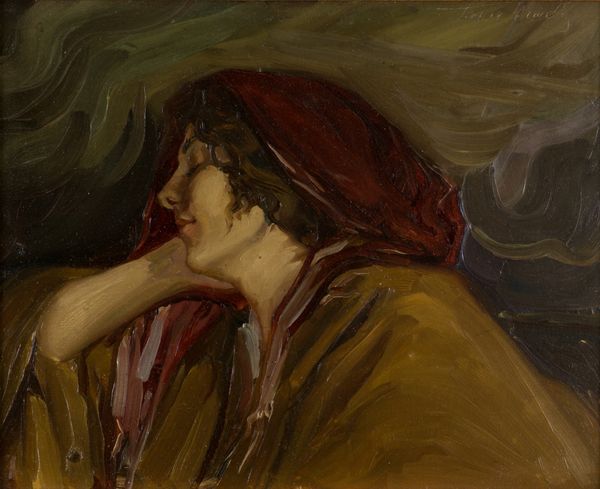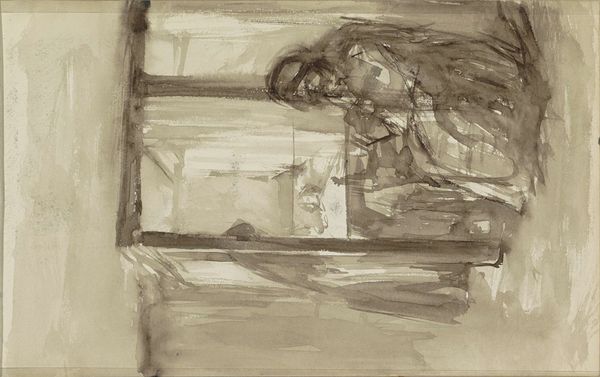
painting, oil-paint
#
portrait
#
painting
#
oil-paint
#
oil painting
#
romanticism
#
orientalism
#
realism
Copyright: Public domain
Curator: Here we have "Girl in Oriental Costume," an oil painting by Alphonse Mucha currently held at the National Gallery for Foreign Art in Sofia. The work embodies a striking blend of orientalism, romanticism, and realism, inviting viewers into a rich tapestry of cultural representation. Editor: My initial reaction is one of muted contemplation. The somber tones contrast so sharply with the implied exoticism, creating a real sense of unease and discomfort. She seems shrouded, almost trapped. Curator: Mucha, while celebrated for his Art Nouveau posters, delved into portraiture with an interesting historical consciousness. How do you read its visual construction? Editor: I immediately question the notion of “Oriental Costume." Costume suggests performance, a kind of staging that raises complex questions about power dynamics and representation. Who is she performing for? Curator: Precisely. Works labeled under the umbrella of Orientalism often depict a Western fantasy of the East. Her veil, jewelry and clothing, read through a colonial lens, are deployed for the male gaze. It's worth examining how museums continue to exhibit works like this, inviting visitors to partake, consciously or unconsciously, in that very gaze. Editor: Yes, there's an undeniable passive quality to her posture that feels imposed rather than natural. Her vulnerability is almost too palpable, fueling the problematic undercurrents of this idealized exoticism. The presentation strips away all agency and personality, reducing the subject to pure "aesthetic" form. Curator: However, consider Mucha's other work. While implicated in Orientalist tropes, this also represents a period of immense cultural fascination, which influenced the art world through decorative motifs, color palettes, and, more broadly, subject matter. It can still be viewed as art capturing the style of an era and an interesting portrait study by the artist. Editor: Sure, but the context deeply matters, the era cannot excuse the insidiousness behind the portrayal. This can incite an uncomfortable dialogue of exploitation, cultural extraction, and Western dominance if not understood correctly. Curator: Absolutely, and our contemporary lens pushes us to interrogate such works relentlessly. Thank you for that very important point, our awareness changes over time and the museum visitor brings themselves and their understanding with them. Editor: Art's role is always about how it intersects with our lived realities. Being reflexive is so critical to how we read this now. Curator: I concur. Perhaps art in museums may start with what we see, but what matters is what it provokes.
Comments
No comments
Be the first to comment and join the conversation on the ultimate creative platform.
